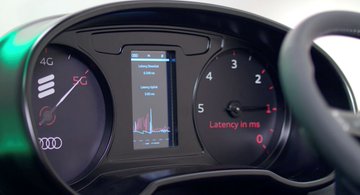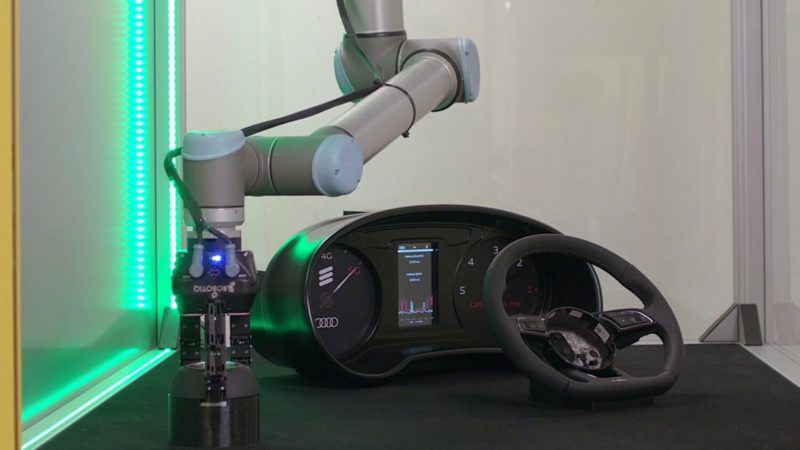Smart factories of the future with automated production systems featuring robots and Automated Guided Vehicles (AGVs) will be driven in large part by 5G connectivity. Standardized protocols for automation communications – PROFINET and PROFIsafe – demand very low latency and strict latency bounds with required guarantee levels to avoid triggering safety stops in the system.
5G URLLC capabilities meets these high demands with greater mobility, flexibility, efficiency and safety in the production lines, as robot cells using a wired network connection are restricted in terms of where they can be placed on the factory floor.

With 5G URLLC, these machines require only a power connection, usually available anywhere in a factory, meaning the production setup can be changed and units moved around on a day-to-day basis to maximize efficiency.
Running the industry standard and protocols for automation communications as PROFINET RT and PROFIsafe, 5G URLLC delivers very low latency and strict latency bounds with required guarantee levels to avoid triggering safety stops in the system. This is of great significance for the industrial automation industry, as it opens the door for safe human-robot interaction, which was previously only possible over a wired network.
Cutting the cables is the real game changer in enabling Industry 4.0. This is one of a range of activities that Ericsson has been working on together with Audi, to explore the potential of 5G as a future-proof communication technology that can meet the high demands of automotive production.

Collaborations like this are essential for the developing the factory of the future. By partnering with manufacturers like Audi, Ericsson is able to develop technologies like 5G URLLC based on and optimized for real-world requirements, and its partners have an opportunity to shape the future of their industry.
At Audi’s P-Labs in Gaimersheim, Germany, Ericsson’s 5G system is already live in a real factory environment. Now, plans are underway to introduce 5G URLLC capabilities to the existing system for more advanced factory automation and personnel safety use cases.
Ericsson and Audi have successfully tested the 5G URLLC capabilities at Ericsson’s factory lab in Sweden and the next step is to bring these capabilities to Audi P-Labs in Germany. Replacing wires in automated factories, 5G URLLC increases flexibility in the production and assembly process while also reducing personnel safety risks.
The arm of the robot is building part of a steering wheel, in this case an airbag, whilst a laser curtain protects the open side of the robot cell. Erisscon and Audi demonstrate an example of transporting safety protocols, while the underlying mechanisms need to be stable and reliable, which is delivered by 5G URLLC.

With the ultra-low latency and reliability of 5G URLLC, if a factory worker reaches into the cell the robot will instantly stop, making it safe for personnel not to be harmed whilst working with the machines. This instant response with guaranteed reliability is not possible through traditional Wi-Fi or previous-generation mobile networks, meaning that these machines have historically required restrictive wired technology.
“As part of our project with Ericsson that was announced in 2018, we continue to test the possibilities offered by 5G technology for industrial applications in the smart factory,” said Henning Löser, Audi’s head of production lab. “5G connects all the dots in our production environment, resulting in tremendous flexibility improvements, enhanced connectivity and a complete reimagining of what safe human-robot collaboration can look like.”
“5G URLLC will provide wireless connectivity that meets the performance demands of industrial automation,” said Marie Hogan, head of mobile broadband & IoT, Ericsson. “The door has been opened, and advanced use cases and Critical IoT applications are now possible with the benefits of greater flexibility, mobility, and efficiency for production automation. Cutting the cables is the real game changer in enabling Industry 4.0.”
Ericsson and Audi first announced their collaboration to pioneer 5G for automotive manufacturing in August 2018. Since then, the partners have made concrete strides to address complex use cases that could never be solved before in flexible production and industry automation, as well as a complete reimagining of what safe human-robot collaboration can look like.




